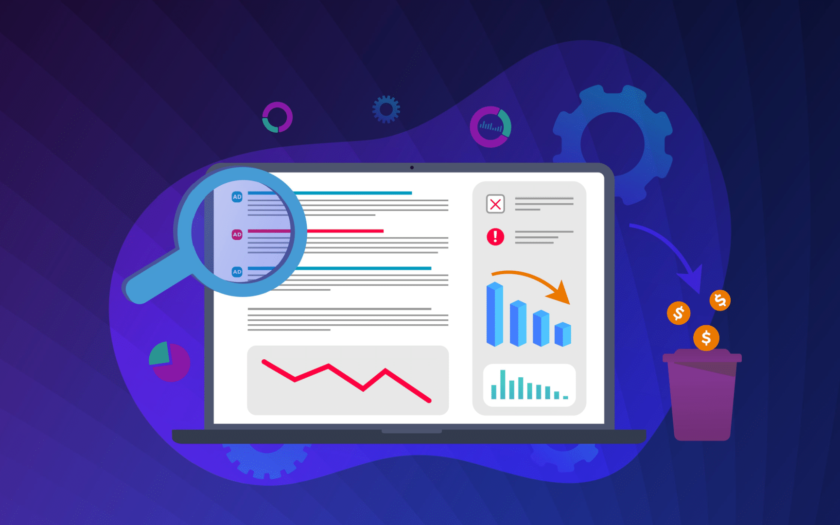Your ad creative stops users mid-scroll, gets them interested, and compels them to take action.
Many marketers make two major mistakes with creative:
They create compelling ads at launch but don’t iterate over time: This means their ads become stale as market trends shift or their customers experience ad fatigue.
They lean too heavily on AI-generated creative without human oversight: AI-generated content often lacks nuance and engagement, making it “safer” but not as aligned with brand tone.
To fix this, you need to:
Understand your audience personas
Different customers respond to different messaging: generic creative appeals to no one.
Make sure that you’re using audience exclusions to protect segmented ad creative.
Regularly test and refresh your creative
Most ad platforms offer built-in A/B testing. Use it to find winning combinations and prevent creative fatigue.
Optimize ad extensions
Don’t just focus on the main ad: ensure assets such as sitelinks, callouts, and images align with your message.
Get the newsletter search marketers rely on.
Mistake 3: Misusing AI in PPC campaigns
AI is everywhere in digital marketing, but using it incorrectly can hurt your results. Marketers often fall into one of two extremes:
Over-relying on AI: Letting automation make all the decisions without human oversight. This includes auto-applying recommendations, enabling audience expansion, and running Performance Max with no exclusions.
Not using AI enough: Ignoring AI-driven bidding strategies, audience signals, and optimization tools. This is common in accounts with overly segmented campaigns using manual bidding. While these tactics can work, they often require significant time and effort, making their efficiency questionable.
The key is balance.
For low-data accounts, AI struggles to make informed decisions. If your budget or audience size is small, you need more manual oversight.
For high-data accounts, AI can analyze trends and optimize bidding better than humans alone. Large campaigns should take full advantage of machine learning to maximize results.
Failing to adjust your strategy as your campaign grows is a major issue.
AI can be a game-changer, but only when paired with human insights and strategic oversight.
Dig deeper: How does AI work in PPC?
Mistake 4: Being afraid to fail
One of the most damaging PPC mistakes isn’t about mechanics: it’s about mindset.
Marketers often hesitate to test new strategies, fearing wasted spend. But in digital advertising, testing and iteration are essential.
Even AI operates with the expectation of failure to refine results over time.
Humans, however, often put unrealistic pressure on themselves to be right 100% of the time.
Here’s why embracing experimentation matters:
Risk-averse strategies limit growth: If you never test new features, ad formats, or targeting methods, you miss out on potential wins.
Platform diversity matters: Your PPC strategy shouldn’t rely solely on Google Ads. Microsoft, Amazon, and paid social platforms all offer unique opportunities.
Budgeting for testing is key: Set aside a portion of your budget specifically for experimentation so you can take calculated risks.
Dig deeper: How to develop PPC testing strategies
Maximize your PPC ROI by avoiding these common pitfalls
PPC success isn’t just about knowing what to do; it’s about knowing what not to do.
By avoiding these common mistakes, you can run more efficient campaigns, spend smarter, and maximize results.
Whether you need to refine your budget strategy, improve your creative, or strike the right balance with AI, taking the time to audit your PPC approach will pay off in better performance and higher ROI.
Contributing authors are invited to create content for Search Engine Land and are chosen for their expertise and contribution to the search community. Our contributors work under the oversight of the editorial staff and contributions are checked for quality and relevance to our readers. The opinions they express are their own.
